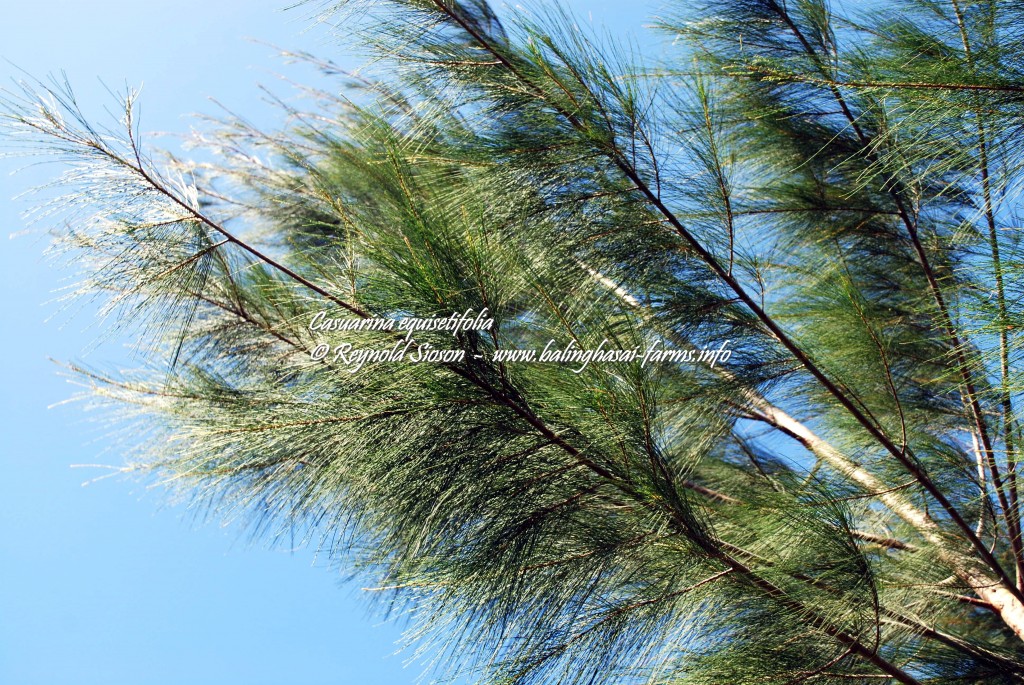Specimen height : 6-14 meters
Local names : Agoho, Agoo
Trade names: Casuarina, Sea pine, She-oak
Botanical name : Casuarina equisetifolia
Family : Casuarinaceae
Traits : Deep-rooted; Evergreen; Fast-growing; Full-sun; Low altitude tree; Medium-sized tree to Large tree; Nitrogen-fixing; Salt-spray tolerant; Subtropical to Tropical tree; Tolerant of infertile soil; Wind hardy
Recommendations : Boundary marker; Coastal stabilization; Erosion control; Fallow improvement; Farms; Green manure; Home gardens; Landscaping; Large avenues; Large gardens; Light shade for crops; Living fence; Living post; Living trellis; Mangrove management; Nurse tree; Ornamental tree; Paper & pulp tree plantations; Pioneer species for coastal areas; Public spaces; Reclamation; Roadside tree; Shade tree; Timber belt; Timber plantations; Urban greening; Windbreak
Used for : Roots, twigs and bark have uses in traditional medicine; Leaf litter as fuel; Raw material for Rayon fibres; Wood for flooring, interior works, ship building, paneling, poles, agricultural implements, walking canes; Pulpwood; Fuelwood and charcoal
Native range : Australia, New Zealand; New Guinea; Polynesia, Bangladesh; coastal Southeast Asia (including in the Philippines)
National conservation status : Not threatened in the Philippines
Further reading :
AgroForestry Tree Database (Casuarina equisetifolia) http://www.worldagroforestrycentre.org/Sea/Products/AFDbases/AF/asp/SpeciesInfo.asp?SpID=477
Philippine Woods : Principal Uses, Distribution & Equivalent Woods in Asia Pacific (A. Ella, A. Tongacan, R. Escobin & F. Pitargue)
Revised Lexicon of Philippine Trees (J. P. Rojo) (660)





